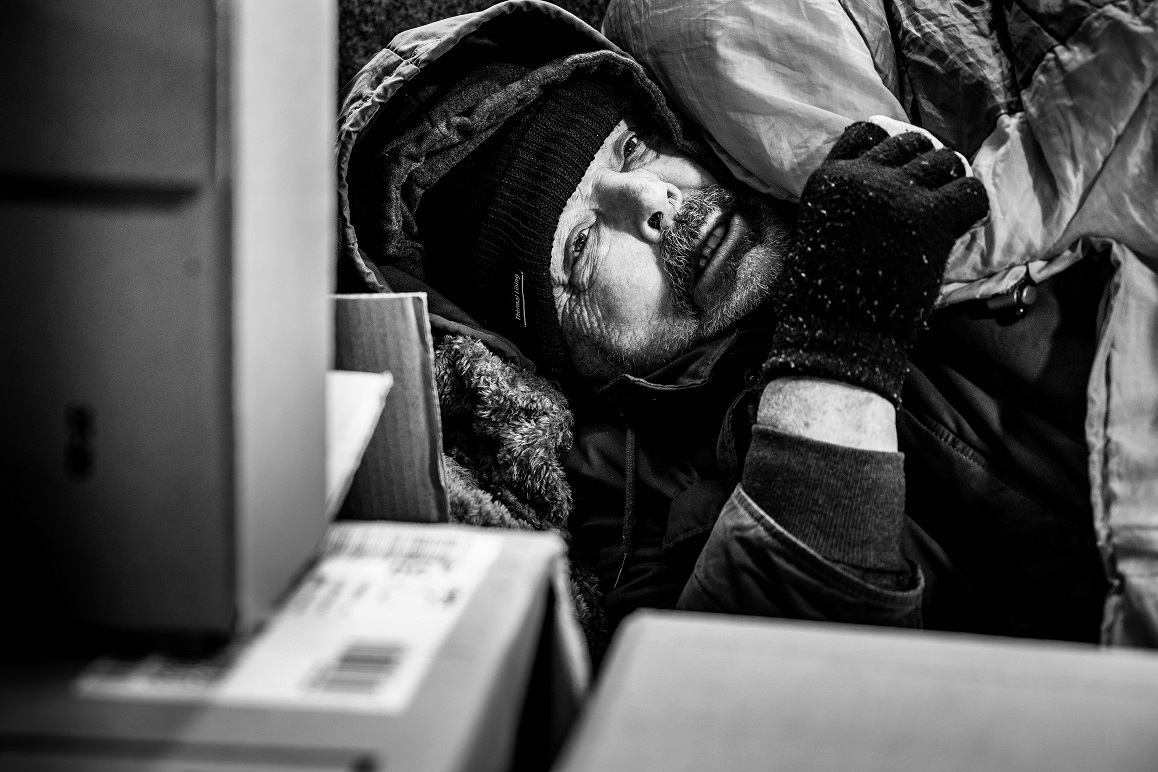We are all doing it – walking down a street, noting a body huddled on the pavement or asleep under a cardboard bedroom and carrying on to wherever we are going.

Text: Sean Sheehan
Photos: Anthony Dawton
Busy lives discourage reflection on what can seem like just another part of a street’s furniture and it is easy to rationalize indifference with ignoble thoughts about the huddled person’s plight and what may have caused it.
Anthony Dawton’s photographs of some of the homeless in “NOT London” are a shock reminder that the bodies are those of individuals with names and lives, struggling to survive and deserving of respect. Dawton’s experience of working in refugee camps in the Middle East and elsewhere helped alert him to the presence of the homeless on the streets of London: “As damaged, scarred, hungry and as far away from their homes as any of the refugees I had encountered on my work overseas”.
Leilani Farha, former UN special Rapporteur on the Right to Housing and the Global Director of The Shift, reminds us in her introduction to “NOT London” that housing is a human right, enshrined in the Universal Declaration of Human Rights.

She recalls how in her meetings with government officials about the homelessness, they never talk about the number of billionaires and the corporate wealth within their countries. Money to help those without a home is not the problem.
Dawton’s photographs are not voyeuristic or exploitative. He asks permission for every one of the photographs in the book, explains the nature of his project and returns with a print of the person whose life he has stepped into.
Wherever possible, he gets to know something about them and the different reasons for their homelessness. Bill, photographed in Southampton Street, left his home and wife after a marital split and had been living on the street for over two months when he was photographed.
Subsequently moving into temporary accommodation, he wrote to Dawton to thank him of the print ‘as a pleasant reminder of a dark and dismal time’.
For others, living without a home becomes a permanent state of existence. Rebecca, photographed outside South Kensington Tube station, has been without a home for three years.

She informs Dawton that she was thrown out of their flat by her boyfriend and takes methadone.
Emma has spent four years on the streets, a shorter period of time than her friend CJ who admits to being “too attached to alcohol”.
They recognise one of Dawton’s photographs as that of a mutual friend, Hayley, who had died a couple of weeks earlier. Hayley is not the only person in this book who has died since being photographed.
“NOT London” is a remarkably and important book because of the way the photographs endorse what the French philosopher Lévinas says about looking into the face of another person, the Other, and recognising in the encounter a call to account for ourselves. Looking into the eyes of a homeless person is what we mostly try to avoid doing but these photographs might this impossible.
“NOT London”, by Anthony Dawton, is published by Pallas Athene.
(Photos supplied by Anthony Dawton and authorised for publication.)














.jpg)












